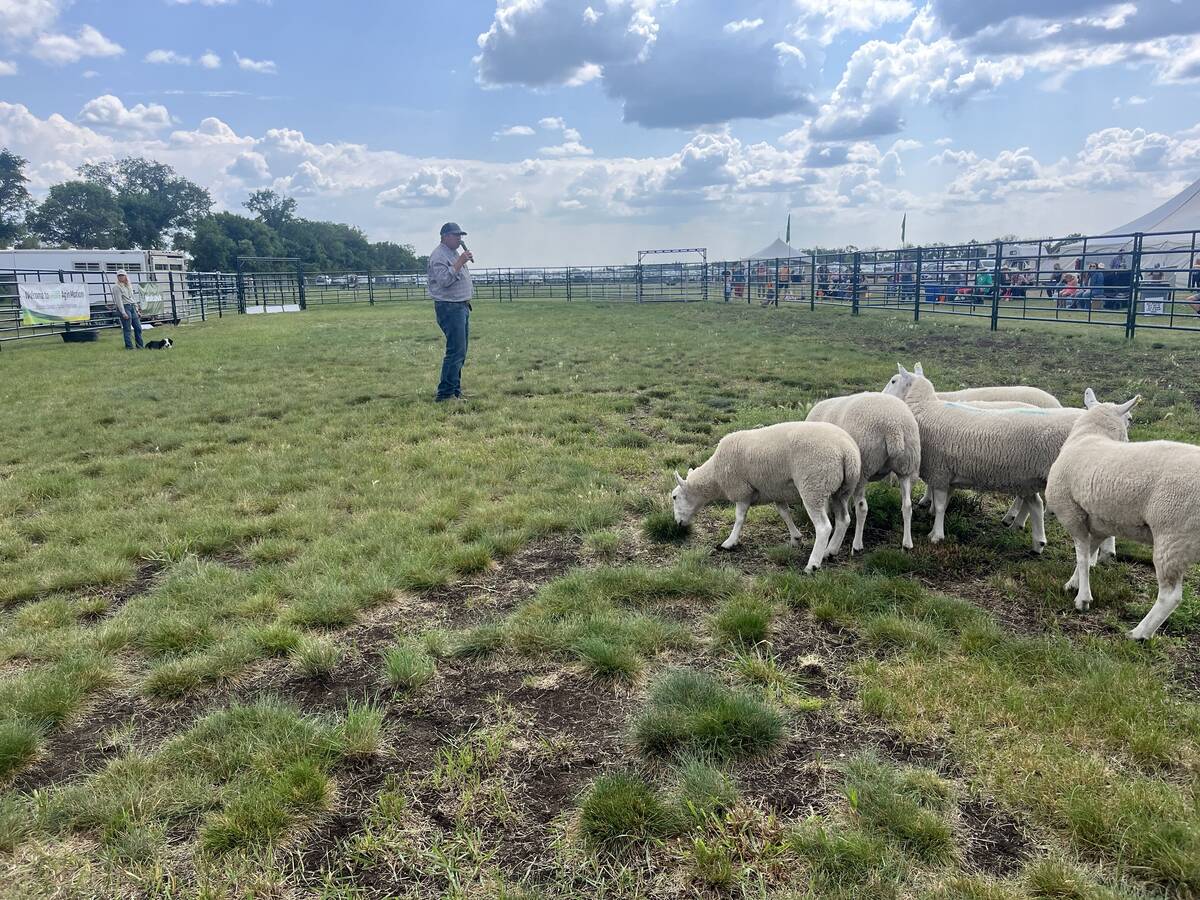Rob Saik won’t divulge how much Trimble paid to acquire Agri-Trend but it is a safe bet he walked away with more than he had when he founded the company in 1997.
“With a Chevette and a soil probe and a $35,000 credit card from the Royal Bank, I started Agri-Trend. I had nothing,” he said.
Trimble is a big player in the global positioning system industry with 2014 sales of $2.4 billion. It sells products to a variety of industries including construction, surveying, agriculture and fleet management.
Read Also

Stock dogs show off herding skills at Ag in Motion
Stock dogs draw a crowd at Ag in Motion. Border collies and other herding breeds are well known for the work they do on the farm.
The company got into the agriculture business in the mid-1990s selling GPS receivers to growers for mapping and yield monitoring.
That morphed into offering guidance systems, variable rate seeding technology and big data solutions.
“It has kind of evolved more into how can we take all of this information we have and use that in a way to make the grower more efficient,” said Michael Helling, business development manager for Trimble’s agriculture division.
The company created Connected Farm Advisor, a field data management tool for growers.
Trimble also amassed a collection of unique technologies involving soil sampling, drone-based imagery, normalized difference vegetative index (NDVI) mapping and rainfall monitoring.
What it needed was a farm advisory service to deliver some of these products and that is why the company purchased Agri-Trend.
“They’re the leader in this expert advice and decision support piece, so they really kind of completed the puzzle for us,” said Helling.
Trimble liked that Agri-Trend uses independent coaches who are not tied to a particular product or service. Trimble employs the same philosophy. The technologies it develops can be used on any brand of equipment.
“(The Agri-Trend purchase) really provides us with continuing that type of strategy with regards to staying brand agnostic,” he said.
Saik, who is Agri-Trend’s largest shareholder, started the company because he was upset with the way farmers were making fertilizer decisions.
He developed a soil sampling process and a 10-step method for interpreting samples and began teaching the system to farmers.
“I remember I paid $9,500 for my first computer projector. It was a huge unit and I used it to do training and seminars and stuff. That began to create (farmer) interest. It began to pull them into my model,” said Saik.
The next project was to develop a strategic crop plan that incorporated soil analytics, production costs and other factors for individual farms. He amassed a network of advisers, which he calls coaches, to help farmers develop individual plans for their operations.
Today the company has more than 200 specialists working across Canada and the United States, including 110 coaches. A team of senior coaches, which is largely made up of retired scientists from government and academia, supports the coaches.
The company also has marketing and business management coaches and a farm management data platform to tie everything together.
The coaches are not employees. They all operate independent businesses. The revenue they generate on behalf of Agri-Trend is shared with the firm.
Agri-Trend does employ about 50 people who work on the executive team and in the accounting, administration, marketing and data programming departments.
The company works with thousands of farmer clients who farm millions of acres.
Helling said it will be business as usual at Agri-Trend under the new ownership.
“They’ve got a great name and they’ve done a great job with that business, so it will stay the way it is,” he said.
The only difference is that Trimble’s Connected Farm Advisor software will be incorporated into Agri-Trend’s Agri-Data Solution farm management software and the coaches will have access to Trimble’s unique technology offerings.
Saik is excited about combining Agri-Trend’s expertise with Trimble’s engineering background.
“They have just a treasure trove of technologies that are inside their tool shed that we can just hardly wait to get our hands on,” he said.

















